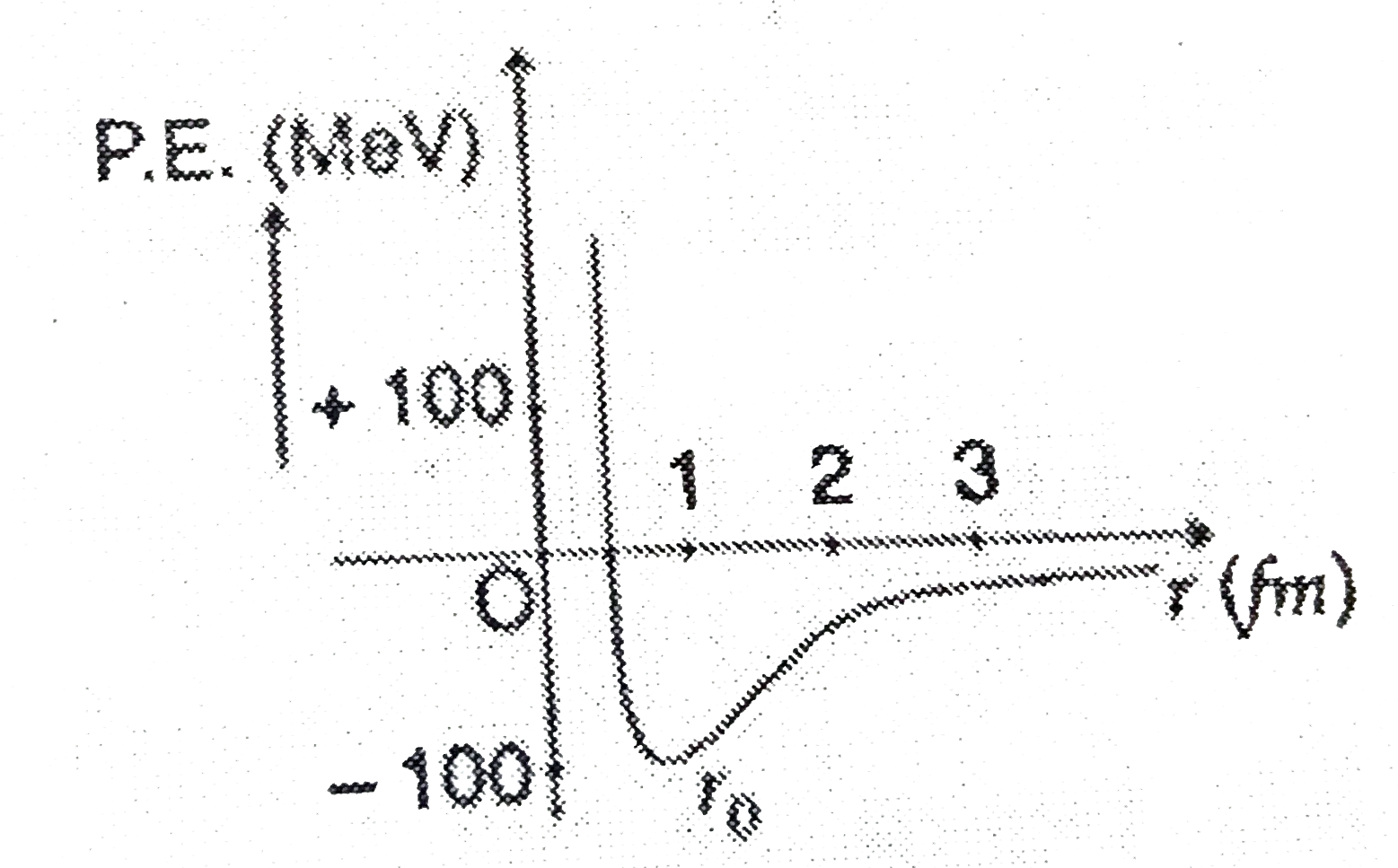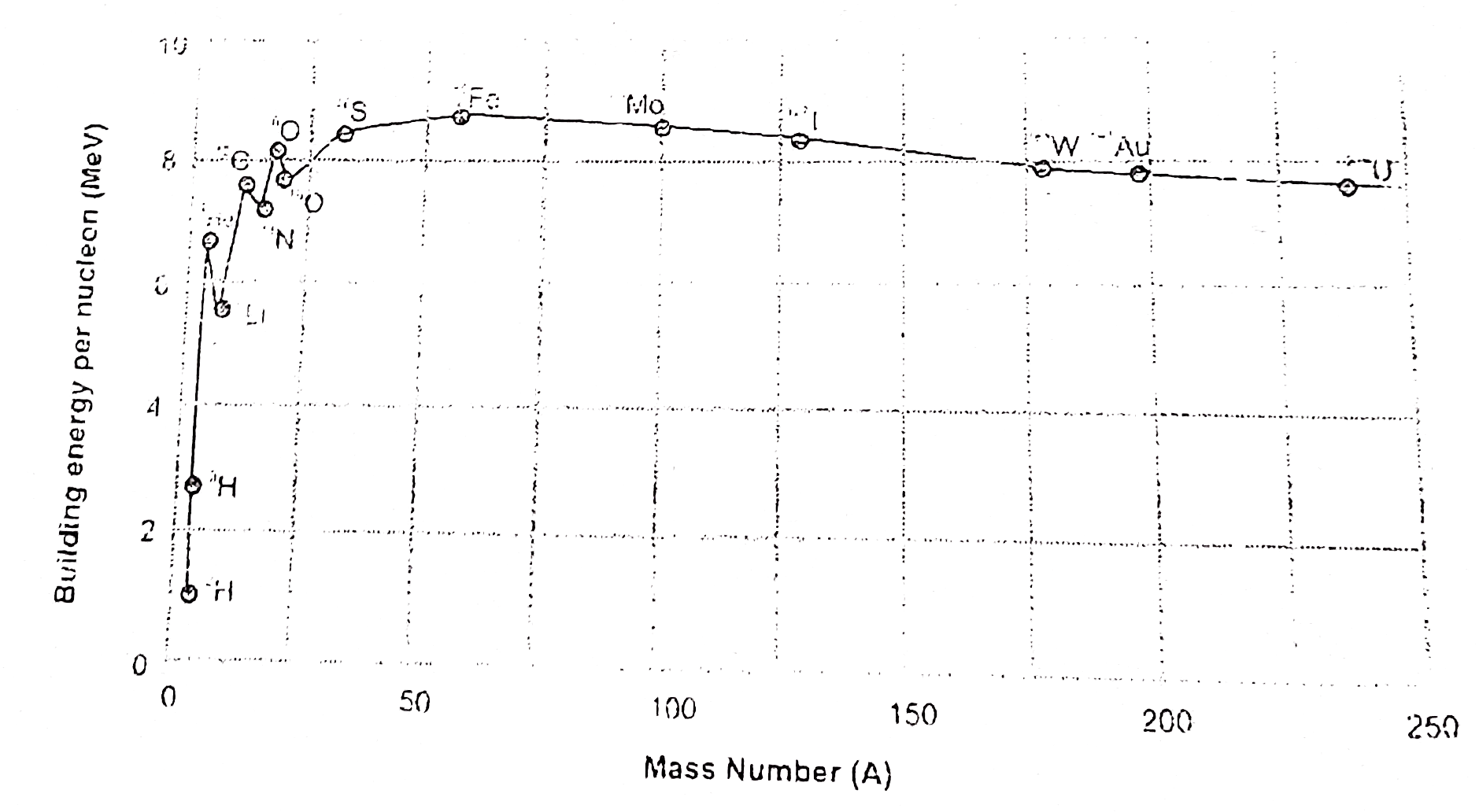(a) The mass of a nucleus in its ground state is always less than total mass of its constituents - neutrons and protons. Explain.
(b) Plot a graph showing the variation of potential energy of a pair of nucleons as a function of their separation.
(a) Protons and neutrons have to come together within a very small space of the order of 10−14 to make a nucleus. The energy required to do so is provided by the nucleons at the expenses of their masses. Due to this, the mass of the nucleus formed is always less than the sum of the masses of the constituent nucleons.
(b) Graph : The graph showing potential energy of a pair of nucleons as a function of their separation is shown in given figure.

Topper's Solved these Questions
- XII BOARDSBOOK - XII BOARDS PREVIOUS YEARCHAPTER - XII BOARDSEXERCISE - SET-II
35 Videos
- XII BOARDSBOOK - XII BOARDS PREVIOUS YEARCHAPTER - XII BOARDSEXERCISE - SET-III
25 Videos
- XII BOARDSBOOK - XII BOARDS PREVIOUS YEARCHAPTER - XII BOARDSEXERCISE - SET III
9 Videos
- SAMPLE PAPER 2019BOOK - XII BOARDS PREVIOUS YEARCHAPTER - SAMPLE PAPER 2019EXERCISE - SECTION D
6 Videos
Similar Questions
Why is the mass of a nucleus always less than the sum of the masses of its constituents-neutrons and protons?
View SolutionDraw the graph showing thervariation of binding energy per nucleon with mass number. Give therason for the decrease of binding energy per nucleon for nuclei with high mass numbers.

The binding energy per nucleon for nuclei with high mass number is low due to the large coulomb repulsion between the protons inside these nuclei.
View Solution
Knowledge Check
The difference between mass of the nucleus and total mass of its constituents is called
APacking fractionBMass defectCBinding EnergyDBinding energy per neucleonThe mass of an atomic nucleus is less than the sum of the masses of its constituents. Thus mass defect is converted in to
Aheat energyBlight energyCelectrical energyDenergy which binds nucleons togetherThe mass of .73Li is 0.042 amu less than the sum of masses of its constituents. The binding energy per nucleon is
A5.586 MeVB10.522 MeVC2.433 MeVD3.739 MeV
Draw a graph between potential energy of a pair of nucleons and separation between them. Also write its main features.
View SolutionDraw a graph between potential energy of a pair of nucleons and separation between them. Also write its main features.
View Solution(a) Draw a plot showing the variation of potential energy of a pair of nucleons as a function of their separation . Mark the regions where the nuclear force is :
(i) attractive and (ii) repulsive.
(b) In the nuclear reaction
n+235U→92aXe+54 94Sr+2nb determine the values of a and b .
View Solution(a) The density of the nuclear matter is tremendously larger than the physical density of the material. Explain.
(b) The nuclear forces are not coulomb forces between nucleons. Explain.
(c) Draw a plot of the potential energy between a pair of nucleons as a function of distance between them inside a nucleus.
View SolutionThe mass of .73Li is 0.042 amu less than the sum of masses of its constituents. The binding energy per nucleon is
View Solution
